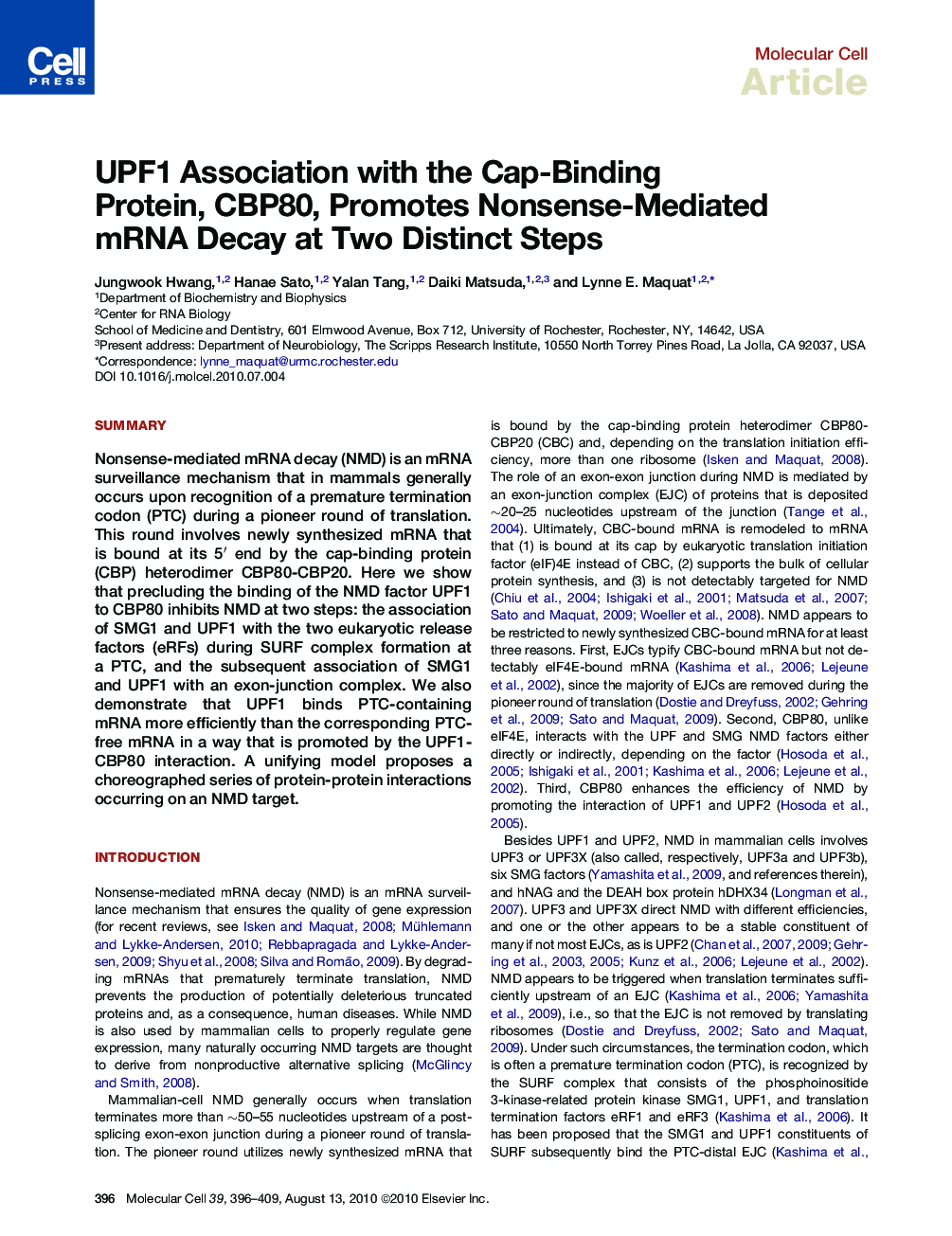| کد مقاله | کد نشریه | سال انتشار | مقاله انگلیسی | نسخه تمام متن |
|---|---|---|---|---|
| 1997042 | 1065536 | 2010 | 14 صفحه PDF | دانلود رایگان |

SummaryNonsense-mediated mRNA decay (NMD) is an mRNA surveillance mechanism that in mammals generally occurs upon recognition of a premature termination codon (PTC) during a pioneer round of translation. This round involves newly synthesized mRNA that is bound at its 5′ end by the cap-binding protein (CBP) heterodimer CBP80-CBP20. Here we show that precluding the binding of the NMD factor UPF1 to CBP80 inhibits NMD at two steps: the association of SMG1 and UPF1 with the two eukaryotic release factors (eRFs) during SURF complex formation at a PTC, and the subsequent association of SMG1 and UPF1 with an exon-junction complex. We also demonstrate that UPF1 binds PTC-containing mRNA more efficiently than the corresponding PTC-free mRNA in a way that is promoted by the UPF1-CBP80 interaction. A unifying model proposes a choreographed series of protein-protein interactions occurring on an NMD target.
► CBP80 at the 5′ cap of newly synthesized mRNAs binds UPF1
► Binding occurs on mRNAs that do or do not harbor a premature termination codon (PTC)
► Binding augments SMG1-UPF1 binding eRF1-eRF3 at a PTC and then a PTC-distal EJC
► UPF1 binds PTC-plus mRNAs more than PTC-free mRNAs at the PTC and/or PTC-distal EJC
Journal: - Volume 39, Issue 3, 13 August 2010, Pages 396–409